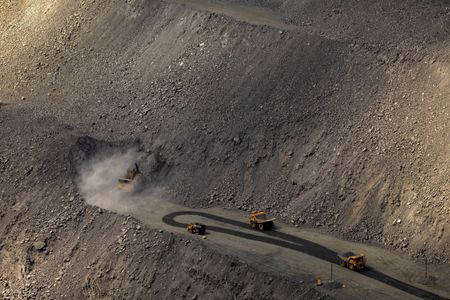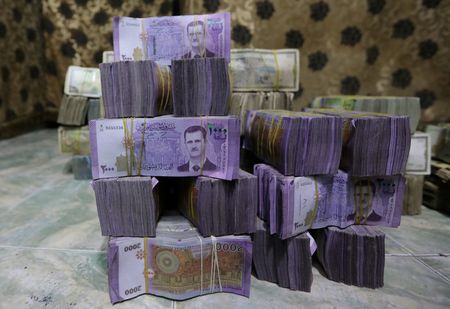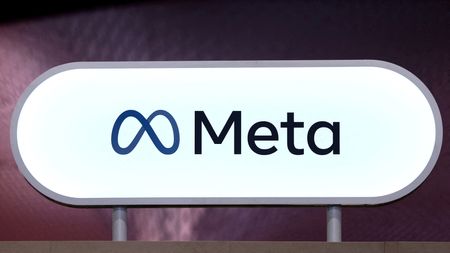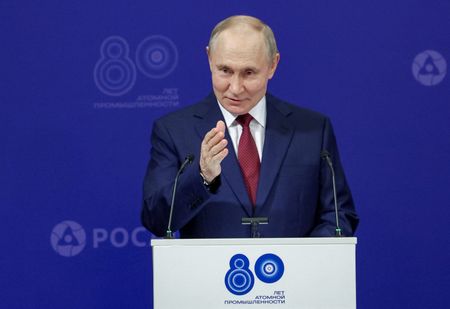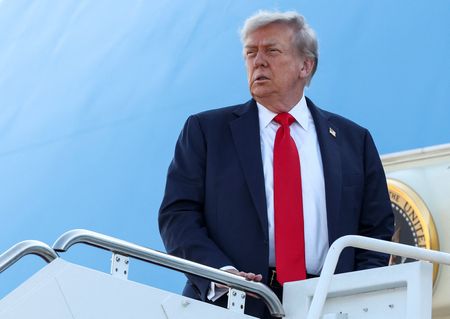By Eric Onstad and Pavel Polityuk
LONDON/KYIV (Reuters) -The financial payoff from a new minerals deal between Ukraine and the U.S. is likely to take a decade or longer as investors face many hurdles to getting new mines into production in the war-ravaged country.
Developing mines that produce strategically important minerals in countries with established mining sectors such as Canada and Australia can take 10 to 20 years, mining consultants said on Thursday.
But most mineral deposits in Ukraine have scant data to confirm they are economically viable. Investors may also baulk at funnelling money into a country where infrastructure such as power and transport has been devastated by Russia’s three-year-old full-scale invasion and future security is not guaranteed.
“If anyone’s thinking suddenly all these minerals are going to be flying out of Ukraine, they’re dreaming,” said Adam Webb, head of minerals at consultancy Benchmark Minerals Intelligence.
“The reality is it’s going to be difficult for people to justify investing money there when there are options to invest in critical minerals in countries that are not at war.”
While the financial benefits from the deal are uncertain, officials in Ukraine hailed it as a political breakthrough: They believe it will help shore up U.S. support for Kyiv that has faltered under President Donald Trump.
Ukraine needs U.S. support – especially weapons and cash – to withstand Russia’s military invasion.
On the U.S. side, Trump heavily promoted the deal, especially the access it provides to Ukraine’s deposits of rare earth elements which are used in everything from cellphones to cars. So government policy could hasten investment.
The U.S. does not produce significant amounts of rare earths and has ramped up a trade war with China, the world’s top supplier.
The text of the deal signed in Washington showed that revenues for the reconstruction fund would come from royalties, licence fees and production-sharing agreements.
The text mentions no financial terms, saying that the two sides still have to hammer out a limited partnership agreement between the U.S. International Development Finance Corp and Ukraine’s State Organization Agency on Support for Public-Private Partnership.
The text details 55 minerals plus oil, natural gas and other hydrocarbons. According to Ukrainian data, the country has deposits of 22 of the 34 minerals identified by the European Union as critical, including rare earths, lithium and nickel.
“The transition from a discovered resource to an economically viable reserve requires significant time and investment, both of which have been constrained, not only since the onset of the war but even prior to it,” said Willis Thomas at consultancy CRU.
Ukrainian finance ministry data showed that in 2024, the Ukrainian state earned 47.7 billion hryvnias, or around $1 billion, in royalties and other fees related to natural resources exploitation.
But the joint fund created under the deal will only get revenue from new licences, permits and production-sharing agreements concluded after the accord comes into force.
SLOW PACE OF MINING LICENSES
Ukraine was slow to issue new natural resources licenses before Russia’s 2022 full-scale invasion. From 2012 to 2020, about 20 licences were issued for oil and gas, one for graphite, one for gold, two for manganese and one for copper, according to the Ukrainian geological service. There are 3,482 existing licenses in total.
Since the agreement creates a limited partnership, the two countries may be looking at direct government investment in a mining company, analysts said.
Chile, the world’s biggest copper producer and owner of state mining company Codelco, could be an example they follow, Webb said.
Another hurdle is that some potentially lucrative projects are on land occupied by Russia, and the agreement does not include any security guarantees. Washington has said the presence of U.S. interests would deter aggressors.
Seven of 24 potential mining projects identified by Benchmark are in Russian-occupied parts of Ukraine and include lithium, graphite, rare earth elements, nickel and manganese.
An official of a small Ukrainian company that holds the licence for the Polokhivske lithium deposit, one of the largest in Europe, told Reuters in February it would be tough to develop without Western security guarantees.
“The deal ties the U.S. more closely into Ukraine in that now they’ve got a bit more of a vested interest in this war coming to an end so that they can develop those assets,” Webb said.
(Reporting by Eric Onstad in London and Pavel Polityuk in Kyiv; Additional reporting by Christian Lowe; Editing by Veronica Brown and Cynthia Osterman)

